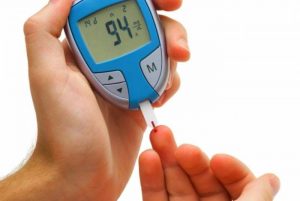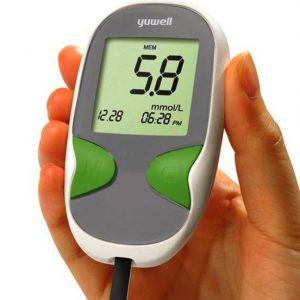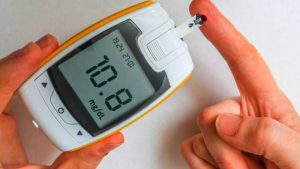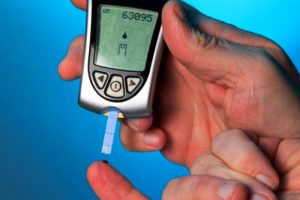The best time to your blood sugar test at home
how to test for diabetes at home
A home blood sugar test is a safe and cost-effective way to check the blood sugar of people with diabetes before they cause further problems. A blood sugar test at home can be life-saving by preventing the effects of high blood sugar. Complications of diabetes can include cardiovascular disease, kidney problems, and nerve damage.
Why should you test your blood sugar?
Blood sugar or blood glucose test provides valuable information for managing diabetes, can help you:
Judge how you have achieved your overall treatment goals
Learn how diet and exercise affect blood sugar levels
Understand how other factors, such as illness and stress, affect blood sugar levels.
Monitoring the effect of diabetes drugs on blood sugar levels
Identify high or low blood sugar levels

How can diabetes be tested at home?
A blood sugar test at home shows how glucose is processed in the body. A home blood sugar kit is glucose test strips that allow the device to detect blood glucose levels. People take blood samples using a lancet or small needle. For the most accurate test, people should diet and control their blood sugar.
A study on high blood sugar shows that people who eat high-carbohydrate foods do not successfully lower their blood sugar after eating. Before the test, people should read the blood sugar control manual and test strips.
How to measure blood sugar at home:
People only need to insert the test strips into the monitor before reading, and you must follow these steps after consulting your doctor about the correct test schedule. Under:
Wash and dry hands before testing.
Some methods recommend cleaning the test area with a cotton ball and a little alcohol.
Some recommend washing only with warm water and soap and do not need to use alcohol. Using any method, make sure the area is dry before sampling.
Some blood sugar testers allow testing on the arm or sensitive area of the body. Rapid changes in blood sugar may be more minor in sensitive areas. When blood sugar changes rapidly, the finger is usually the best part of the body to measure blood sugar.
Use your fingertips when testing and use another finger in the test.
People with thicker or drier skin should insert the needle deeper into their fingers.
Squeeze your finger gently and keep it flush with your chest, allowing blood to drip onto the test strip.
Write down the blood sugar level shown.
When should a blood sugar test be done?
Your doctor may perform this test at three different times, often over several days.
Morning in the state of fasting
Provides information on blood glucose levels before eating or drinking anything. Reading blood sugar before eating provides the baseline number, which provides a clue about the glucose processes during the day.
Pre-meal blood sugar test
Pre-meal blood sugar is low, so high blood sugar at this time indicates problems with blood sugar management.

Postprandial blood sugar test
Postprandial testing is a good idea because it shows the body’s reaction to the food eaten. Postprandial blood sugar can help diagnose gestational diabetes that occurs during this period.
When manually recording your results, record the date, time, test results, medication and diet, and exercise and report to your doctor at all appointments.
Interpretation of blood sugar results:
For people with diabetes, blood sugar levels should be as follows:
Fasting (morning or before meals): 80-130 mg per a tenth of a liter (L / dl)
Before meals: 70 to 130 mg per deciliter
Two hours after the start of the meal: below 180 mg per deciliter
When sleeping: below 120 mg per deciliter
For people without diabetes, blood sugar levels should be in the following range:
Fasting (morning or pre-meal test): below 100 mg / dL
Before meals: less than 110 mg per deciliter
Two hours after a meal: below 140 mg / dL
When sleeping: below 120 mg per deciliter
Diabetes is not only diagnosed by home tests.
Your doctor may also perform a fasting test, a glucose tolerance test, or a combination of these methods.
When should you test your blood sugar?
Your doctor will advise you on how to check your blood sugar. In general, the number of tests depends on your type of diabetes and your treatment plan.

Blood sugar test for people with type 1 diabetes:
If you have type 1 diabetes, your doctor may test you four to 10 times a day. Before and after meals and snacks, you may try it before and after exercise, before bed, and sometimes at night. You may also need to check your blood sugar more often, change your daily schedule if you are sick, or start a new medication.
Blood sugar test for people with type 2 diabetes:
If you are using insulin to manage type 2 diabetes, your doctor may recommend several blood sugar tests, depending on your type and dose.
If you do several injections a day, tests before meals and at bedtime are usually recommended. If you only take long-acting insulin, you may only try it twice a day before breakfast and dinner.
If you control type 2 diabetes with non-insulin medications or your diet and exercise alone, you may not need a daily blood sugar test.
Know your target area:
Your doctor will review your test based on several factors, including:
- Type and severity of diabetes
- Age
How long have you had diabetes?
- Pregnancy status
- Existence of diabetic problems
- Public health and other medical conditions
When should I see a doctor?
People who use a home blood device should see a doctor, especially in more than one case. People with diabetes who do not control their blood sugar properly or experience a sudden onset of blood sugar should consult a doctor.
Your doctor may recommend lifestyle changes, medications, or both. Diabetes can be controlled by controlling carbohydrate intake and regular exercise.
People with pre-diabetes or borderline diabetes are at risk for diabetes and do not act quickly to control their blood sugar.
They should talk to their doctors and check their blood sugar regularly.

What do you do if you have a continuous glucose monitor (CGM)?
People on insulin therapy, especially those with type 1 diabetes, can also use CGM. These devices use a subcutaneous sensor to measure your blood sugar every few minutes. Some devices show your blood sugar in a receiver at any time, and if your blood sugar is low or high, the device alarm will turn on.


